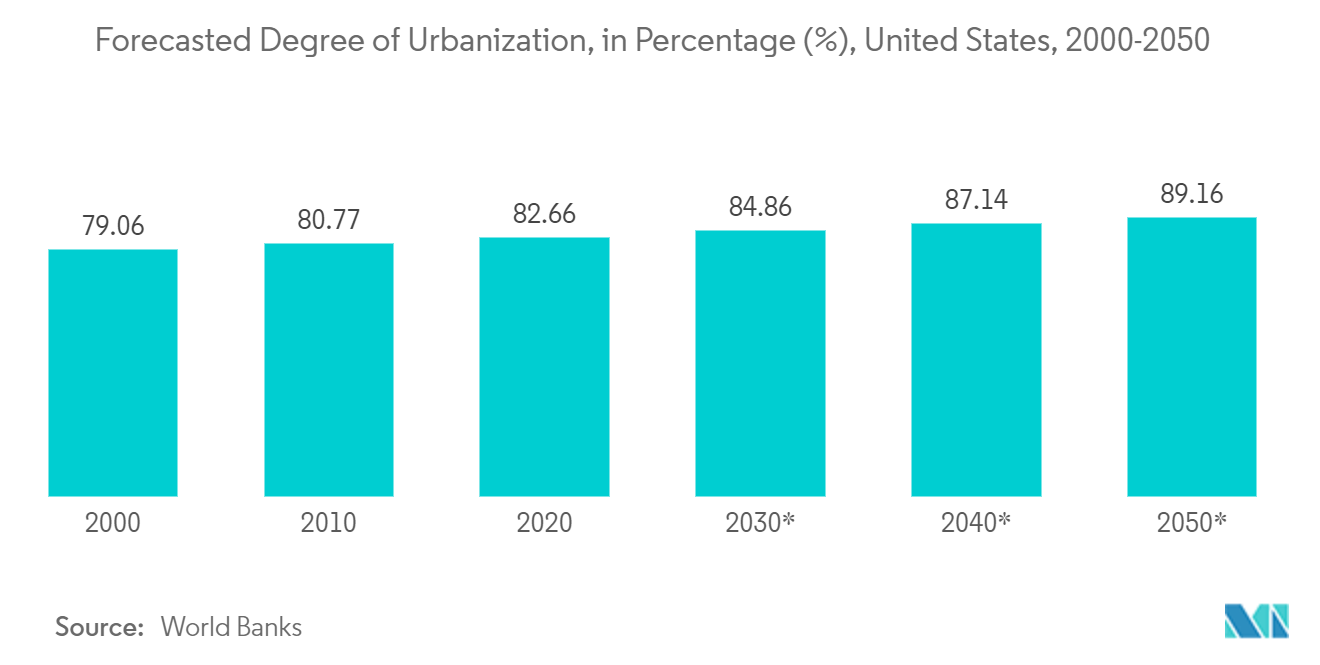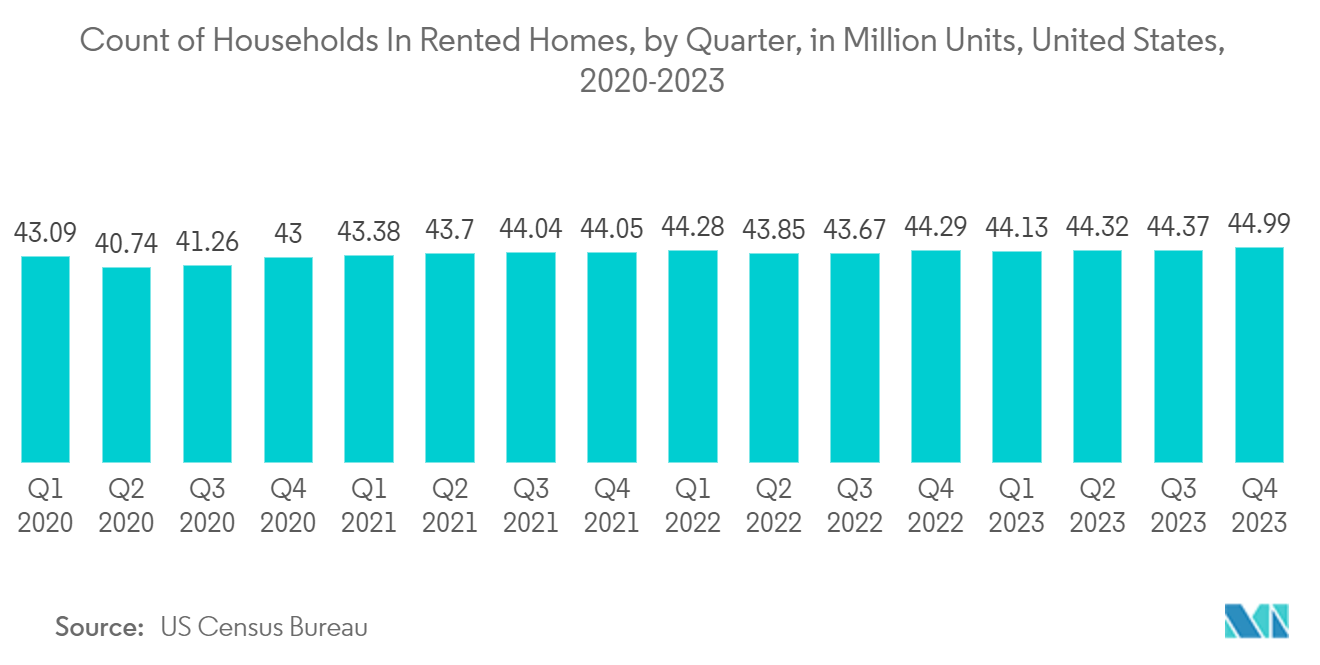Market Trends of United States Self-Storage Industry
Increased Urbanization and Smaller Living Spaces to Drive the Market
- Increasing urbanization is one of the major factors driving the United States self-storage market growth. The continuous growth in urbanization across the United States has resulted in smaller living spaces, propelling the demand for extra storage. In addition, the rising population in metro areas further supports the growth in the construction and establishment of new self-storage facilities by market vendors.
- According to the United States Census Bureau data, California, Texas, Florida, New York, and Pennsylvania were the top five most populous states in the United States in 2023. In bustling metropolitan areas, where working and living spaces are often small, the demand for additional storage solutions has grown significantly in the past few years. States like California, Texas, New York, and Pennsylvania exemplify this trend, where self-storage facilities have become more popular, catering to the diverse needs of businesses and residents.
- Further, increasing population density in various federal states of the United States propels the demand for self-storage facilities to support residents and businesses in highly populated areas. For instance, according to the data from the US Census Bureau, in 2023, the District of Colombia had the highest population density in the United States, with 11,107.7 people per square mile, followed by New Jersey and Rhode Island, with 1,263.2 people per square mile and 1,060.0 people per square mile, respectively.
- Moreover, due to the rising urban population in the United States, consumer spending on goods and services is facilitating the need for self-storage spaces. This is evident from the World Bank data, the degree of urbanization in the United States is expected to reach 89.16% by 2050.
- Market vendors are capitalizing on the trend and opening new self-storage facilities to offer a cost-effective and convenient way to free up space and securely store belongings. For instance, in January 2024, SecureSpace Self Storage announced the opening of a new self-storage facility, SecureSpace Philadelphia Grays Ferry, in Philadelphia, Pennsylvania.
- Hence, as cities expand and evolve in the United States, self-storage stores are analyzed to become an integral component of the urban infrastructure. In addition, continuous growth in urban population and rising population trends in many States across the United States amplify the demand for self-storage units to meet the demand for extra storage. These factors are expected to positively influence the market growth over the forecast period.

Personal Users to Hold Major Market Share
- The Personal segment is supported by the increasing rent prices in the urban cities of the country and the population densities, which are fueling the adoption of small houses with fewer storage room facilities in the residential real-estates in the country, supporting the need for a cost-effective and secured external self-storage space in the United States.
- For instance, in July 2023, Rent.com, an apartment search engine and online marketplace, reported that the rent prices in the country’s buildings have risen by over 15% nationally from 2021, adding over USD 275 to monthly rent bills to the tenants in the United States, showing the need for external storage facilities for the personal segment to reduce their renting expenses, which would fuel the market growth in the country during the forecast period.
- Additionally, in November 2023, the Institute of International Education, which focuses on foreign affairs, international peace and security, and international student exchange and aid, stated that California, New York, and Texas have contributed the highest enrollment of international students, which would fuel the demand for migrant population growth in the country and can increase of population densities in these cities of the United States, supporting the demand for external storage spaces during the forecast period.
- The United States has witnessed a surge in the number of renters, fueling the demand for self-storage facilities. Data from the US Census reveals that in 2023, the count of households in rented homes reached 43.8 million, up from 43.1 million in 2022. Concurrently, the rate of homeownership has been on a decline, with 66% of households owning homes in 2023, down from 69% in 2004. This shift toward renting has made it challenging for tenants to transport their belongings to their rental properties, leading to a rising preference for self-storage facilities. These facilities offer a convenient solution, allowing renters to store their items without cluttering their living spaces.
- The surging demand for personal self-storage in the United States is a reflection of evolving lifestyles, urbanization, life transitions, and the need for flexible storage options. As individuals increasingly prioritize convenience, security, and accessibility in managing their possessions, the personal self-storage sector is poised to remain a pivotal segment within the broader storage and moving services industry.


